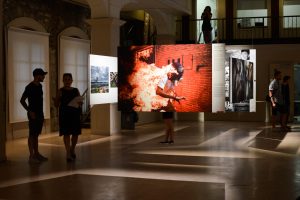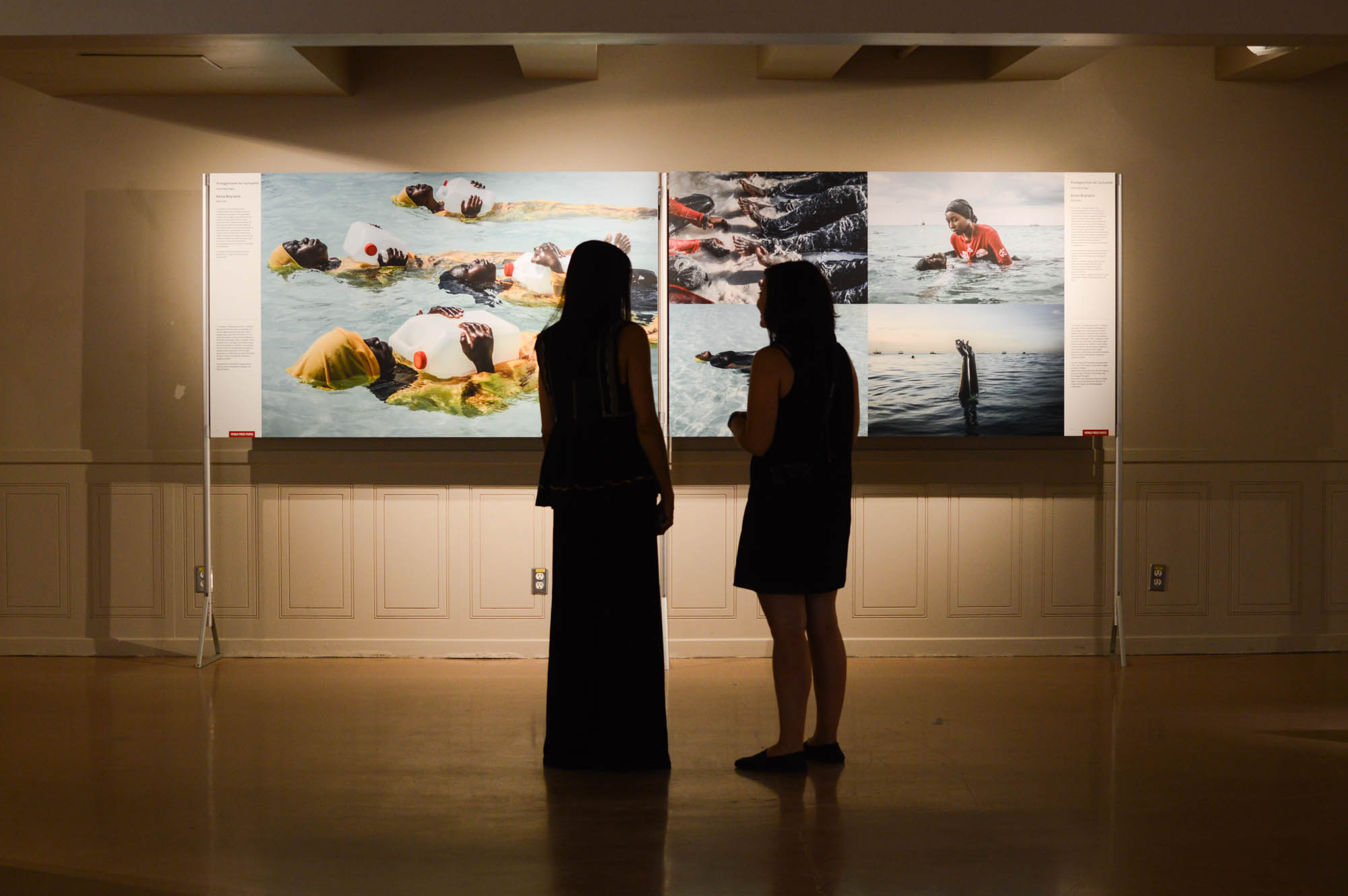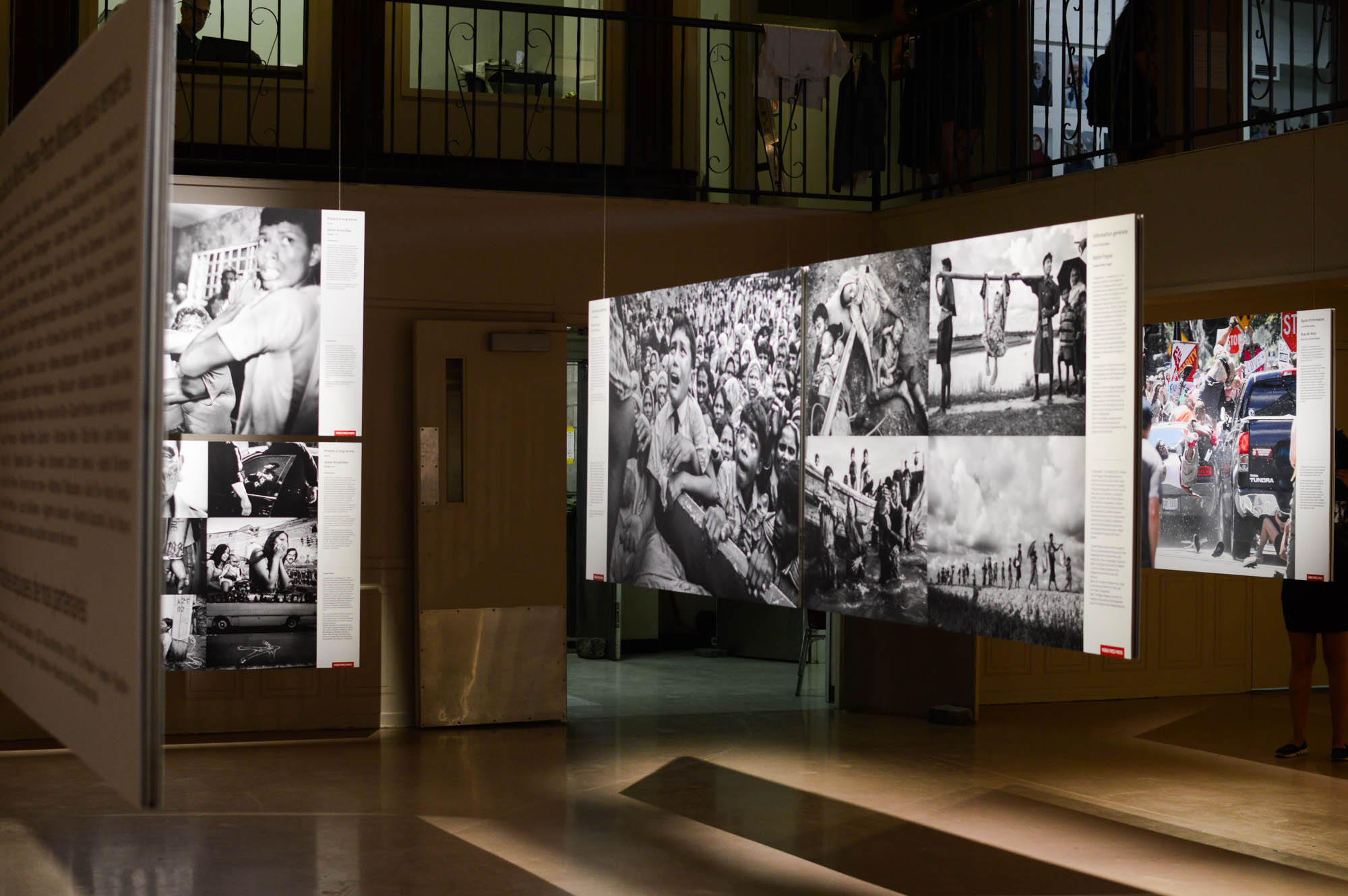World Press Photo is back in Montreal for its 13th annual exhibition
Nestled in the heart of Old Montreal is a small window into the whole world; one minute you’re gazing down a tree-lined promenade of the Old Port and the next you find yourself confronted with the mountains of garbage piling up on the shores of New York City, Japan and the Netherlands.
The World Press Photo exhibition has a unique way of making the viewer look far beyond their immediate surroundings and into the intimate lives of others. This year, the travelling exhibition returns to Montreal for its 13th edition, showcasing the best documentary photography from around the world under one roof.
Yi Wen Hsia, the exhibition’s manager and curator at World Press Photo, said the contest is one-of-a kind, both in the scope of its subject matter and its reach as an internationally touring exhibition.
“This year, we received over 73,000 images from more than 4,000 photographers from many different countries,” she said. The photos are viewed by an independent jury of photographers, editors and other experts before being narrowed down to first, second and third place winners in each of the eight categories. “We always strive to reflect what is happening in the industry; we saw that the environment and the issue of sustainability is one that has become more and more prominent,” said Hsia of the newly added Environment category.

Photo by Mackenzie Lad.
Present among the winning photographs are recurrent themes pulled from international news headlines over the past year and captured through multiple lenses. Images of right-wing extremism in the United States—including the widely circulated image of the car that drove into a crowd of protestors killing one woman in Charlottesville, Va.,—hang adjacent to photos of riots in Venezuela and a series about the ongoing conflict in the Middle East.
“Another major topic that we saw was the issue of the Rohingya fleeing into Bangladesh,” Hsia said. “We have a couple of winners this year dedicated to that topic.” She said this may prevent the touring exhibition from entering Burma due to the heightened political tensions and the government’s refusal to officially recognize the Rohingya as its citizens.
Regardless of the topic, each winning photo shares what is arguably the most important element of documentary photography: a powerful story. According to Hsia, the story behind the image and the context in which it is taken is a significant factor in the selection process.
“We want viewers to have a deeper understanding,” she said, after describing one photographer’s brush with death in the midst of a protest and another’s decade-long commitment to her subjects. This “deeper understanding” lies at the heart of World Press Photo’s mission to give time and space to important visual stories that will resonate with audiences in a world so oversaturated with disposable images.

Photo by Mackenzie Lad.
Anna Boyiazis is one of this year’s winning photographers with a story that began long before capturing the images that won her second place in the People category. Her series, Finding Freedom in the Water, depicts a group of young girls clad head to toe in modest swimwear, learning how to swim for the first time off the coast of Zanzibar, Tanzania in East Africa.
“I had visited the island before, and I was told girls don’t swim. To which I replied, ‘This one does.’
I was being told what I was doing was inappropriate,” Boyiazis said. Time passed, but the experience resonated with her. “Once the idea was planted, it just blossomed as a perfect merging of my interest in humans rights, public health and women’s and girls’ issues.”
Upon learning that an organization called Panje Project was finally providing an aquatic education opportunity to local girls, Boyiazis jumped into action. She reached out to Panje Project asking to come document the organization’s work but received no response. After weeks of waiting, Boyiazis wasn’t ready to give up, so she boarded a plane to Tanzania.
“It was the best way to present my idea face-to-face. After that, it took two months for the idea to be presented to all of the teachers, parents, community leaders and elders to make sure they were comfortable with their girls being photographed,” she recalled. But it didn’t end there.
“After access was secured, I spent two weeks teaching the instructors English and an additional week in the water without my camera.”
Finally, after months of anticipation and preparation, Boyiazis stood waist-deep in brilliant aqua blue water watching young girls leave their conservative cultural restrictions ashore and experience the euphoria of floating for the first time.
Though the majority of her time was spent without a camera in hand, Boyiazis noted that the level of trust established over the course of the project allowed the subjects to be vulnerable with her. This sense of intimacy is reflected in her series of photographs.
“I think after a while of all that, the preconceived ideas that I had needed to be discarded, because I have to be true to the story that is right in front of me,” Boyiazis said. “If I’m looking for all of those other things, I might miss what’s actually going on.”
When asked if she approached her work with a journalist’s consideration for a story or an artist’s eye for aesthetics, Boyiazis didn’t miss a beat. “Emotion. Heart,” she responded.
The age-old saying “good things come to those who wait” is entirely appropriate here and for most of the award-winning photographs that line the walls of the World Press Photo exhibition.
There is something to be said for an extraordinary stroke of luck that creates a striking photograph. For Boyiazis, though, a real connection between the photographer and the story is more than a guiding principle of documentary photography; it is the philosophy of her practice.
“Do stories that matter to you, and don’t care if anyone might not be interested,” Boyiazis said. “I mean, it makes me want to cry; I didn’t think anyone would ever resonate with this. But here it is.”
The 13th annual World Press Photo exhibition runs from Aug. 29 to Sept. 30 at 325 Rue de la Commune E. The exhibition is open seven days a week, and students get a discount on admission prices.




